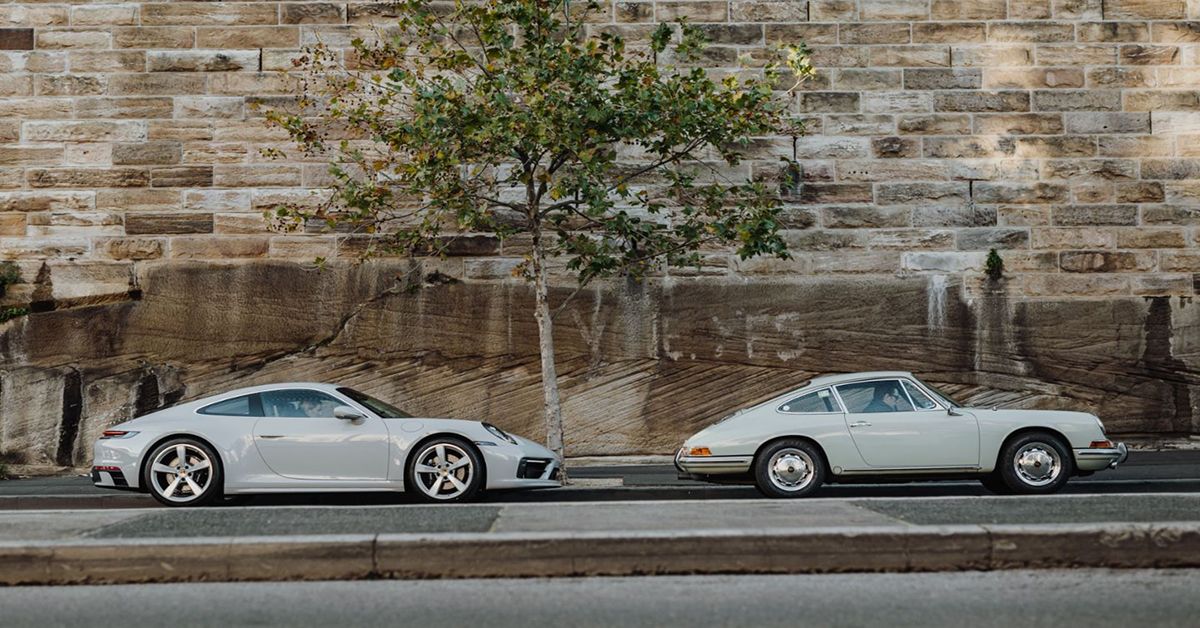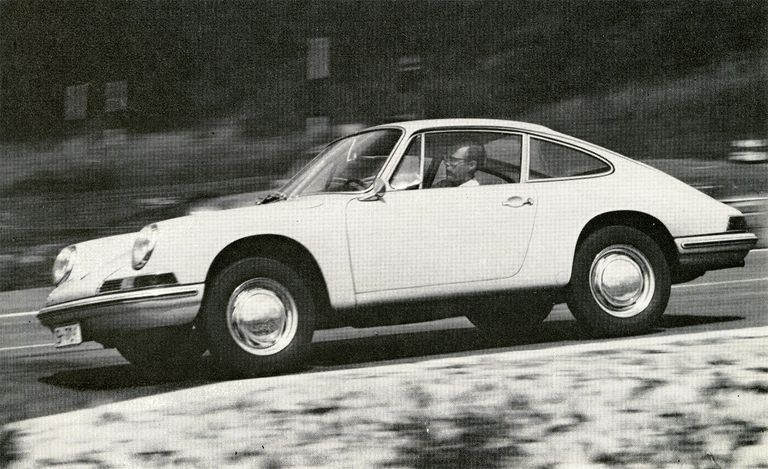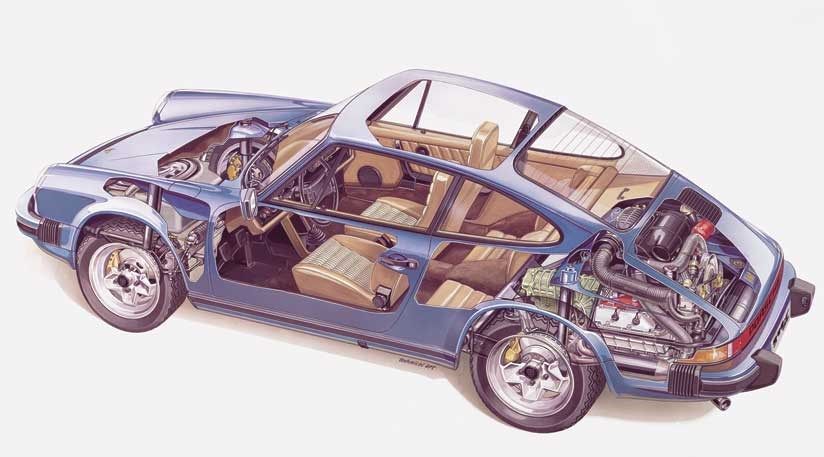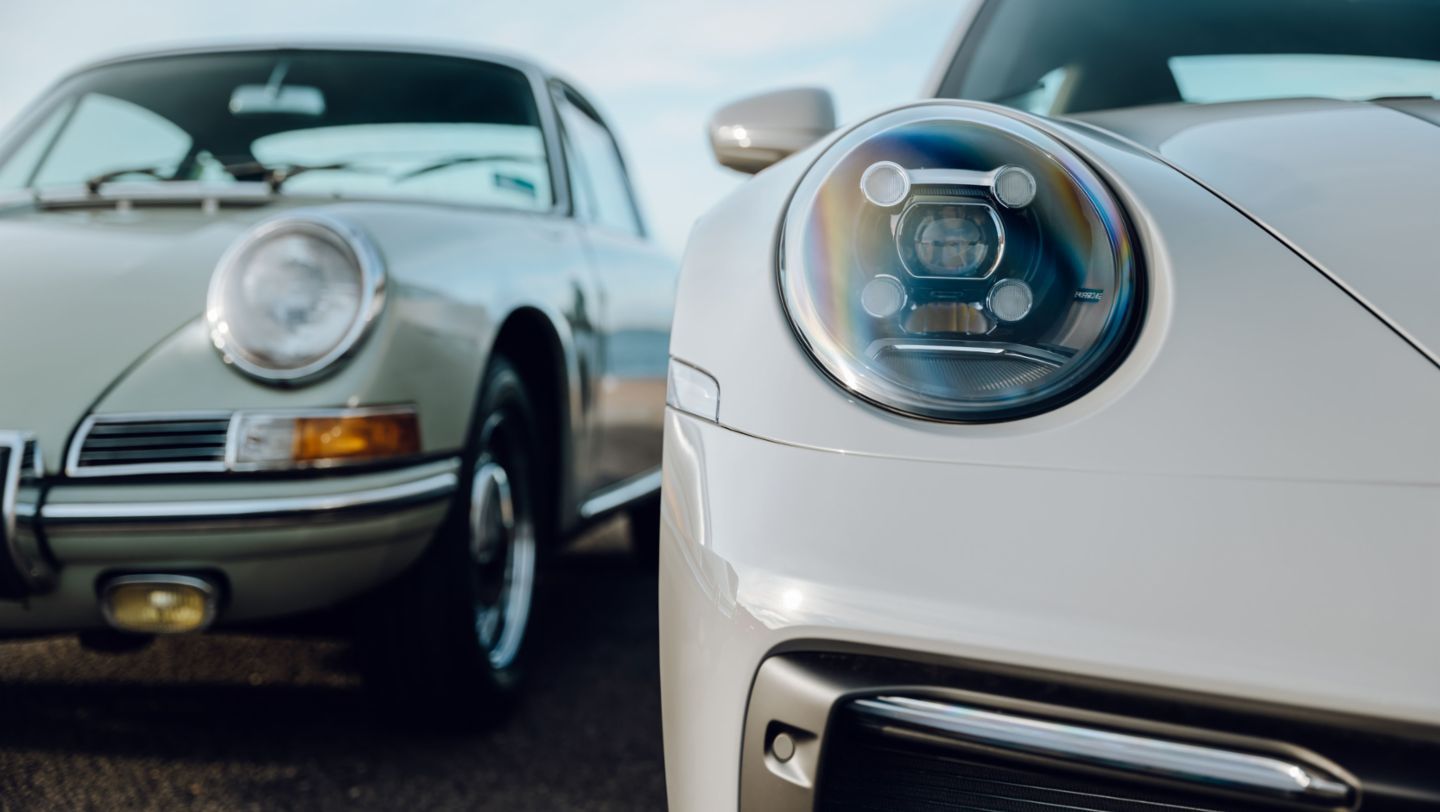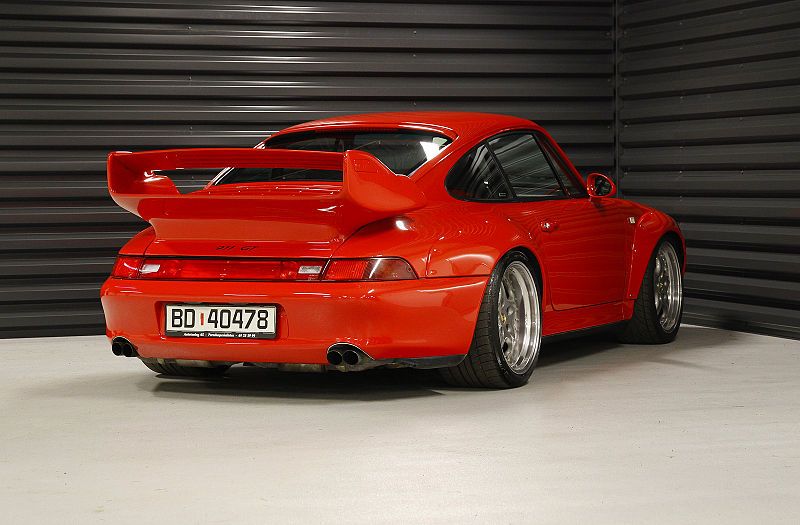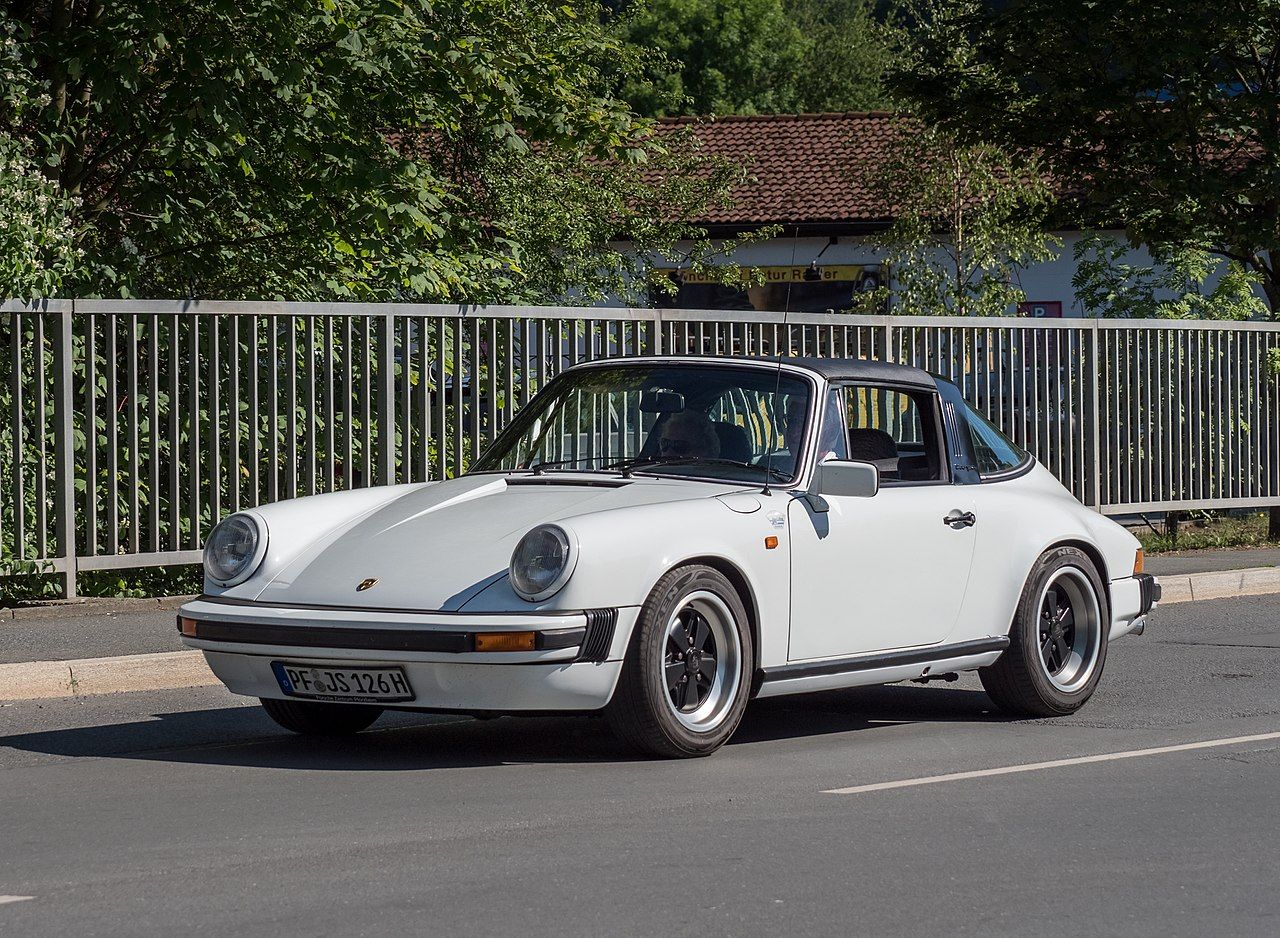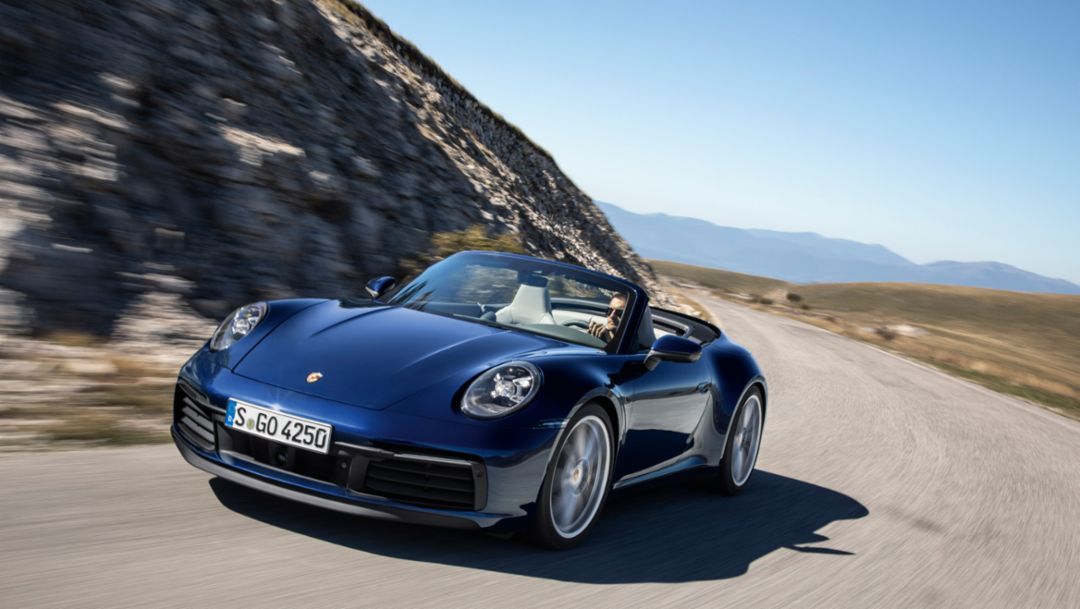You just know a car’s special when you need an entire catalog just to run through the seemingly endless nomenclature it’s been through. And yes, we’re talking of a single model, the Porsche 911. If you haven’t heard this name before you’ve probably been living under a very lonely rock. Nevertheless, despite its svelte silhouette, the 911 isn’t just a fast sports car. This car has a rather unique format that needs you to learn how to master it. Call it an art form, if you will. And it’s this very bond between car and driver that makes it so special.
The 911’s tale began in 1959, when Ferdinand Alexander Porsche, aka “Butzi”, the grandson of the OG Ferdinand Porsche, chalked out a few sketches for what was intended to be the replacement for the 356. Albeit a more powerful and luxurious version of it. The 911 was to retain the same rear-engine, rear-wheel-drive formula from the 356, which in retrospect, was borrowed from the Volkswagen Beetle. It was originally supposed to be called the Porsche 901. But Peugeot claimed rights to using the zero in the middle of three-digit car names. Et voila! Porsche went with the 911 moniker instead. Hard to imagine it named any other way.
The OG 1965 Porsche 911
So, the first models of the 911 came with a 2.0-liter, obviously rear-mounted, flat-6 “boxer” engine that was good for 130 ponies. Now the whole RWD format along with the rear-mounted engine gave the 911 very peculiar handling characteristics. While other RWD cars did exist at the time, most of them had a forward-mounted engine, which consequently created a forward weight bias and left the rear wheels often clambering for traction. The weight of the rear-mounted engine addressed traction issues to some extent while keeping the front-end light, creating very different handling dynamic. It allowed the steering to be more precise, with the front suspension not having to bear the weight of an engine.
The 911's Rear-Mounted Engine Layout
The Porsche 911 eventually went on to become one of the most successful cars in racing history. But not before it underwent a myriad of design transformations and displacement changes. There was even a more affordable four-cylinder version of the 911 when the 356 ceased production. The one thing that remained instantly recognizable and constant, though, despite design changes, would be its iconic silhouette. Fifty-six years down the line, and you’d still be able to recognize a 911 even if you were blindfolded. The bug-eyes, low front-end, tear-drop mid-section, and fastback tail end were such successful exercises in styling that little has needed to change since the 991’s inception. And why would they? Just look at it, will you? The lines are almost poetic in the way they flow from the nose to the tail.
The Iconic Bug-Eye Headlight Is Here To Stay
But here’s where it gets a tad complicated. If we were to delve into the full nomenclature of the 911 through the years, we’d probably be sifting through the list well into the wee hours of the night. But you’ve surely heard of names like the Carrera, S, R, RS, RSR, GT3, GT2, and Turbo. And that isn’t including the almost unending list of numbers like the 912, 930, 934, 935, 964, 992, and 993, to name a few. These aren’t fictional numbers, though. If you were to mix and match the names with the numbers, you’d definitely stumble across one of the many different formats of the 911. And that includes everything from different wheels, wheelbase, and comfort goodies, to engine displacements, AWD, and a very sick collection of spoilers.
Sick Ducktail Spoiler on The 1996 Porsche 911 993 GT2
So, let’s not complicate things and just delve into the most iconic 911s instead. Now we can’t be talking about the 911 and completely forget about the enigma that is the Targa. Funny story, though. Porsche had actually gotten word that convertibles were soon to be outlawed in the US. Ergo, the good folks in Stuttgart, Germany, created the absolutely unmistakable Targa model in 1967. It got its name from Porsche’s competition success in the Targa Florio race. This model had a roll bar with a removable roof-plate that came as close as you could to a convertible. Of course, when Porsche realized they should’ve probably verified their information more carefully, an actual cabriolet version was released in 1983. And there’s no arguing with how irresistible a convertible version of a Porsche is.
The Enigma That Is The Targa
From the 1970s onward, Porsche periodically upped the engine displacement for better performance and tweaked the design and components to better handle the extra firepower. But it wasn’t until 1972, that the fabled 911 Carrera RS 2.7 came into existence and Porsche’s focus on performance really took the limelight. It’s also the first model that sported Porsche’s iconic ducktail spoiler. In 1975 the Turbo model was introduced and was the first model from Porsche to sport, well, a turbocharged engine. It also had these wider hips that really made it a sight to behold.
The Cabriolet Version Of The 911 Is Just Irresistible
But it wasn’t until 1988 that the 911 Classic was finally replaced by the 964 – a model that saw radical design and structural changes. Then came the 993, which is considered by Porsche purists to be ‘the last true 911’. That was the last 911 to bear an air-cooled engine. It was also the first to come with a six-speed gearbox and AWD. All models post the 993 utilized more modern, and reliable, liquid-cooled engines. In 1999, however, Porsche ditched their signature headlights and went with the Boxter’s teardrop design. This, no doubt, drew a ton of flak from the automotive community, and rightly so. It wasn’t until 2004 that Porsche realized its folly and went back to the round headlights with the introduction of the 997 Carrera. From then on Porsche’s just been pushing the performance boundaries of the 911 like you wouldn’t imagine. The stonking 3.8-liter engine in the 2014 991 GT3 revved all the way to a screeching 9,000rpm.
The 911’s legendary status isn’t hard to fathom, but it was Ferdinand Porsche who best described its qualities: “The 911 is the only car you could drive on an African safari or at Le Mans, to the theatre or through New York City traffic.”

